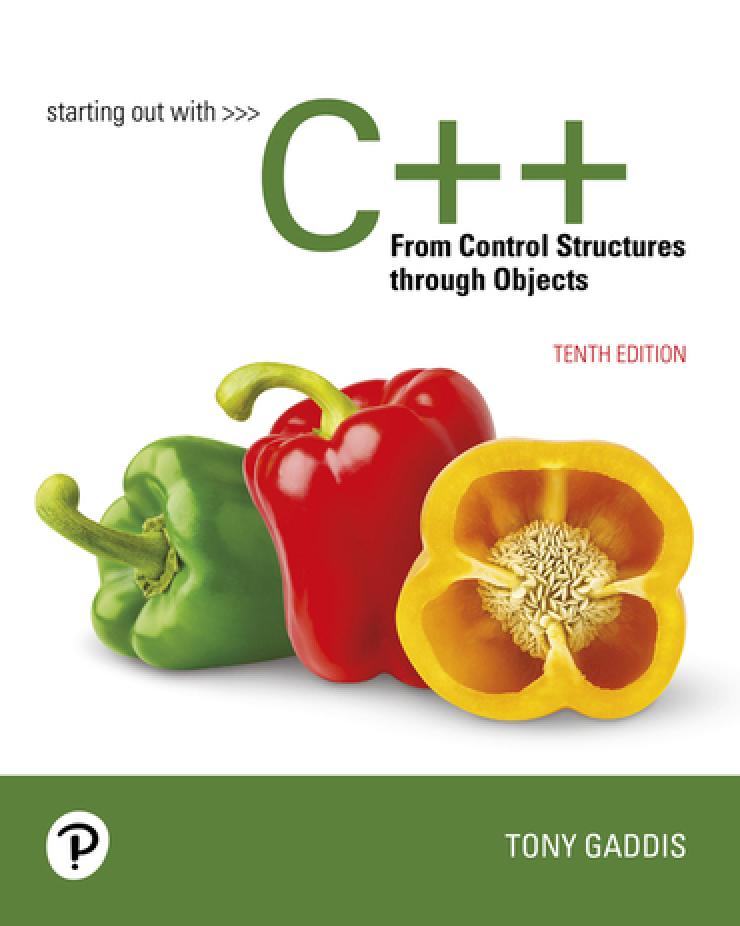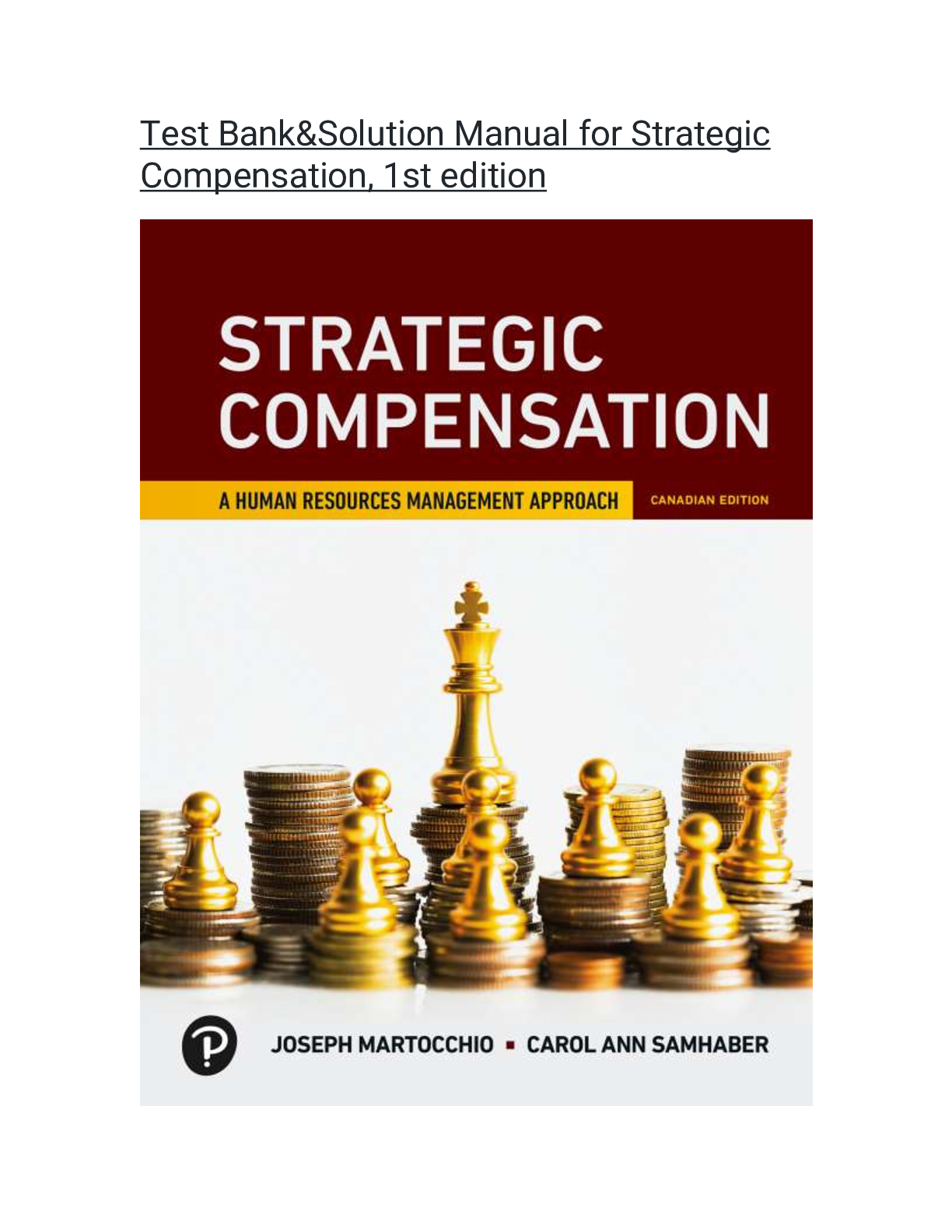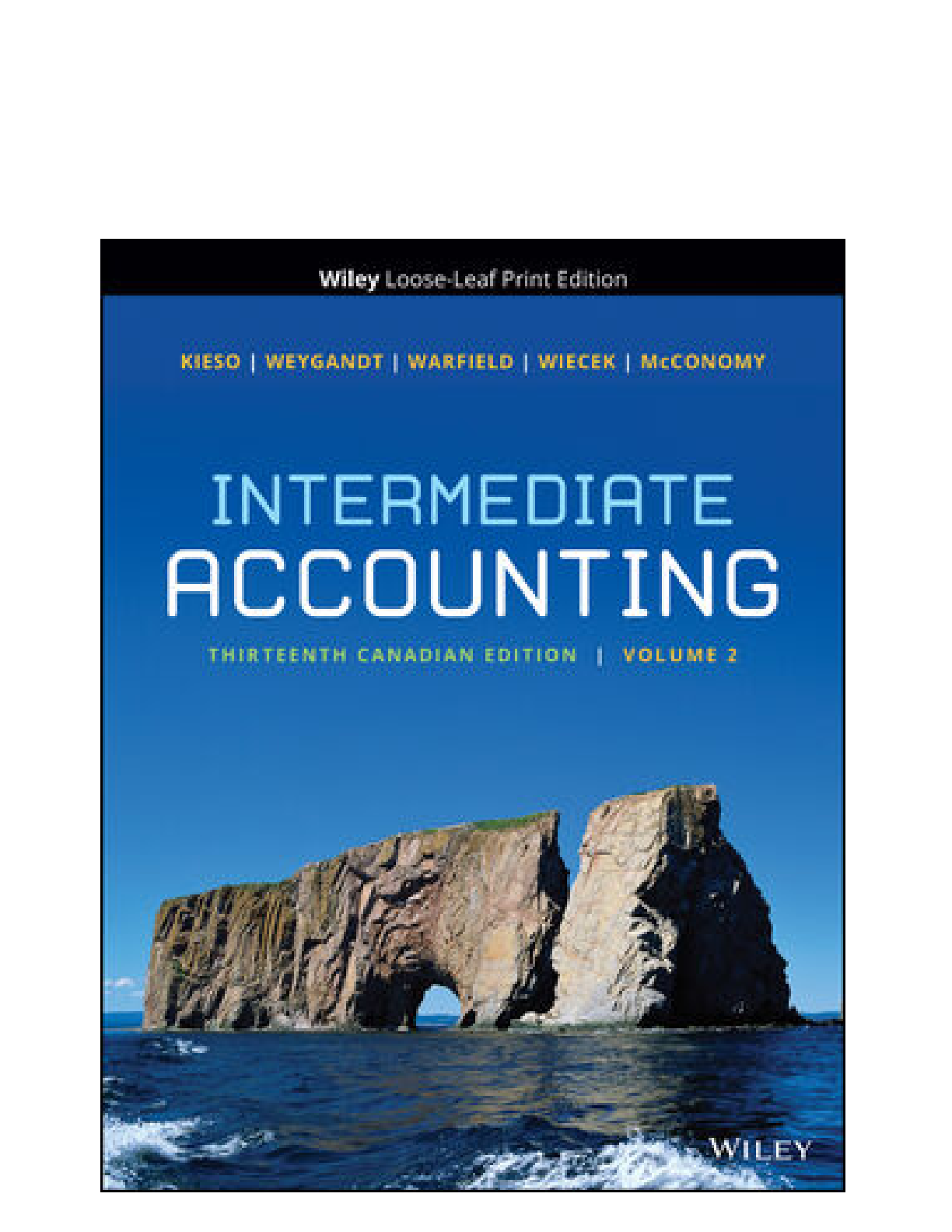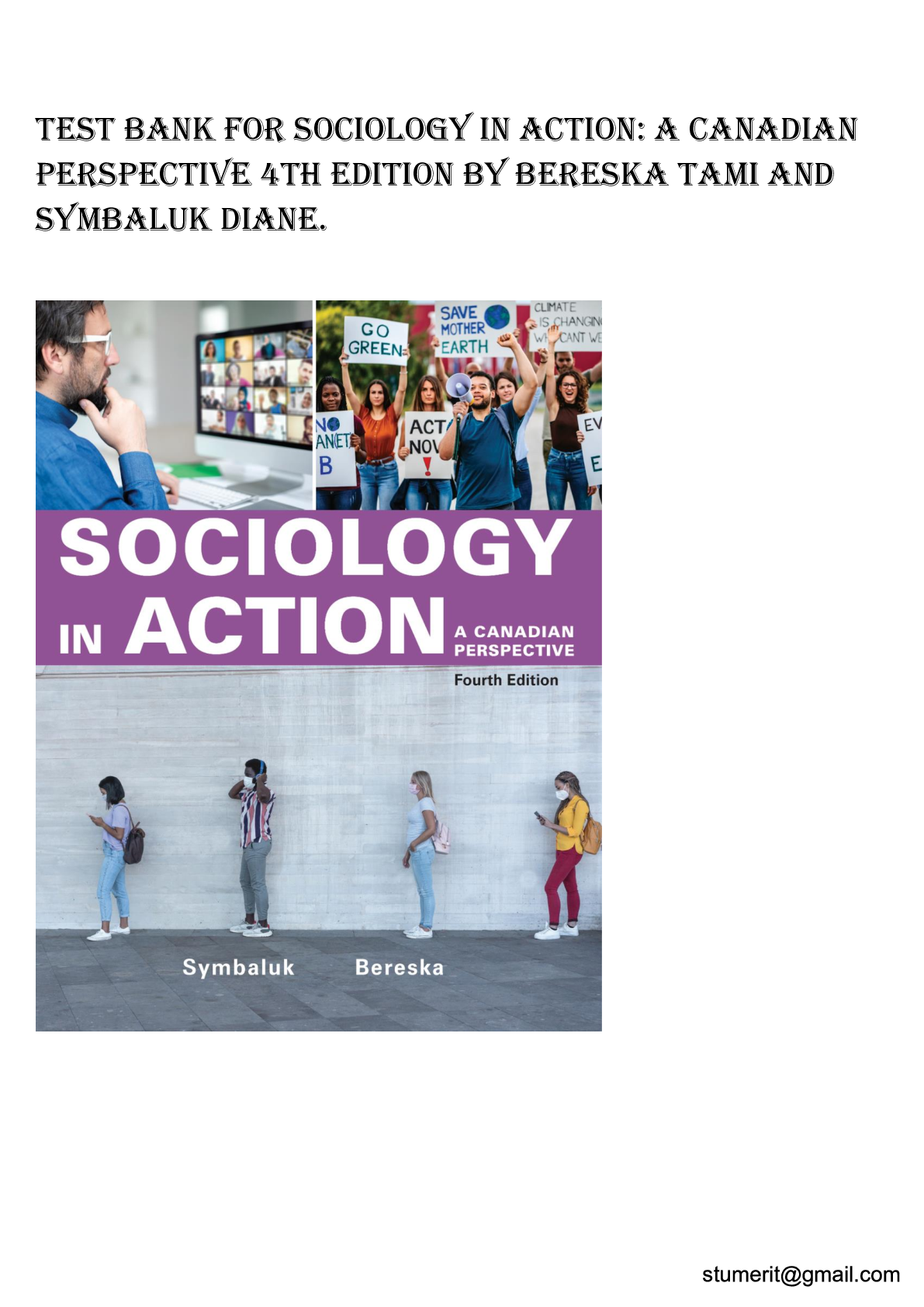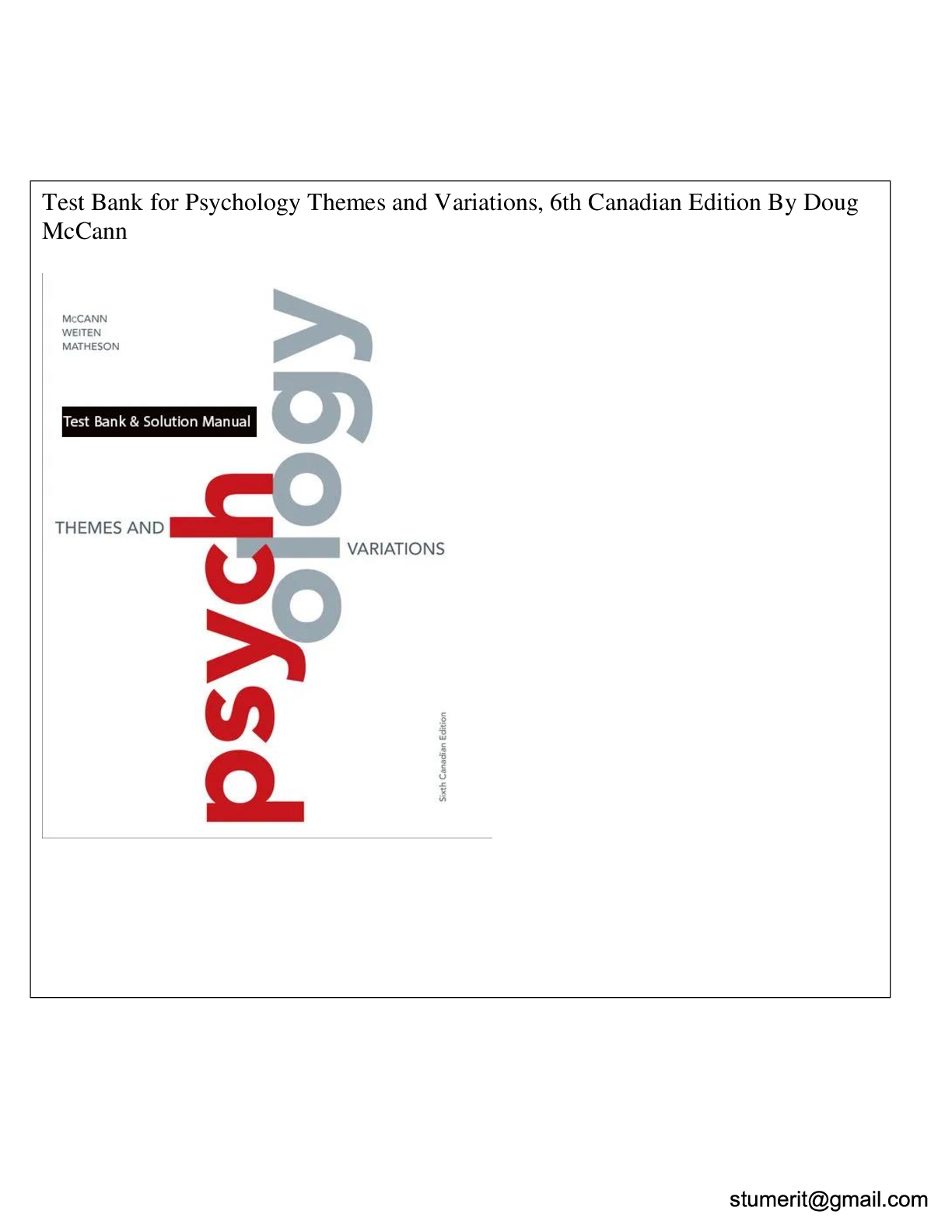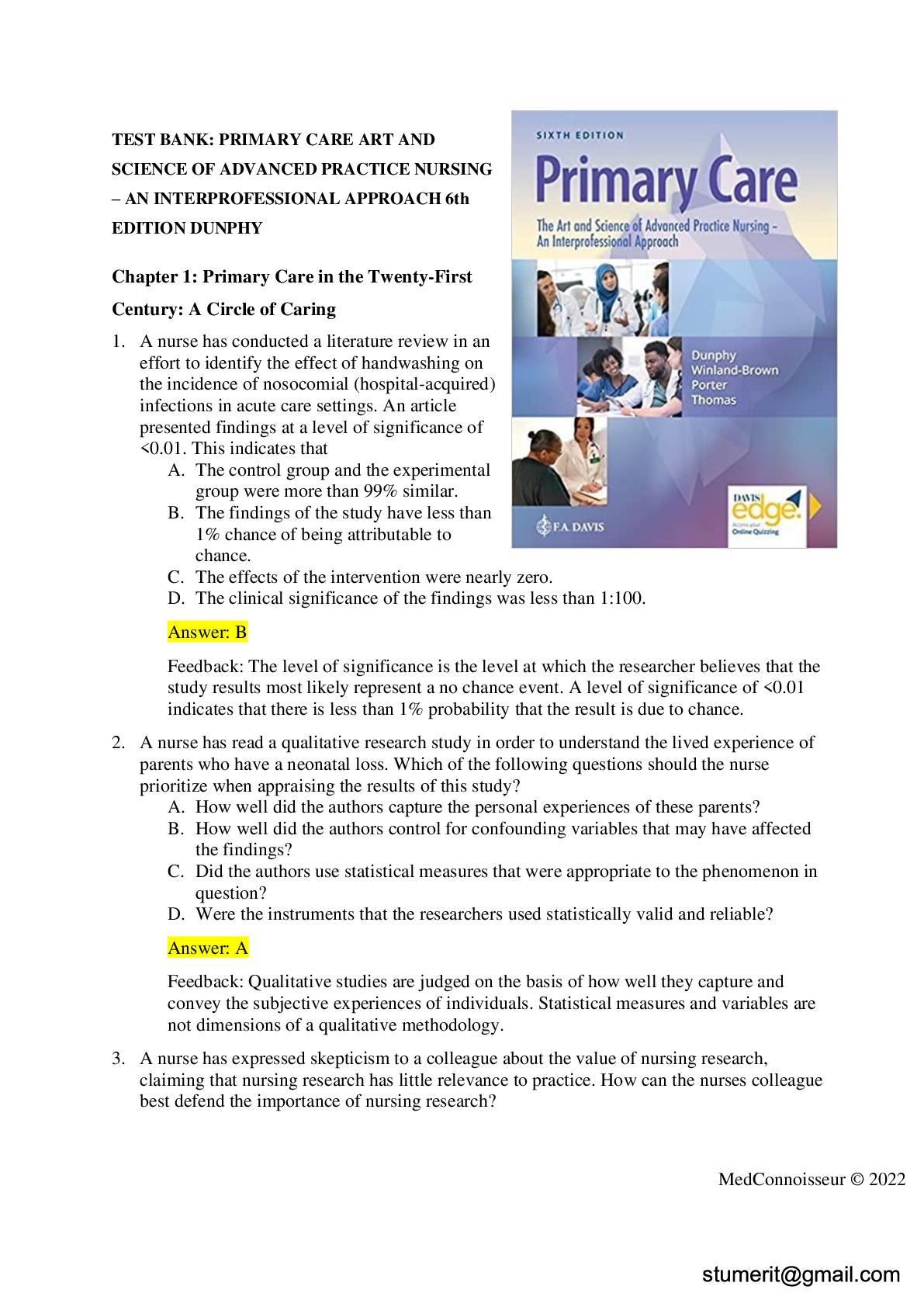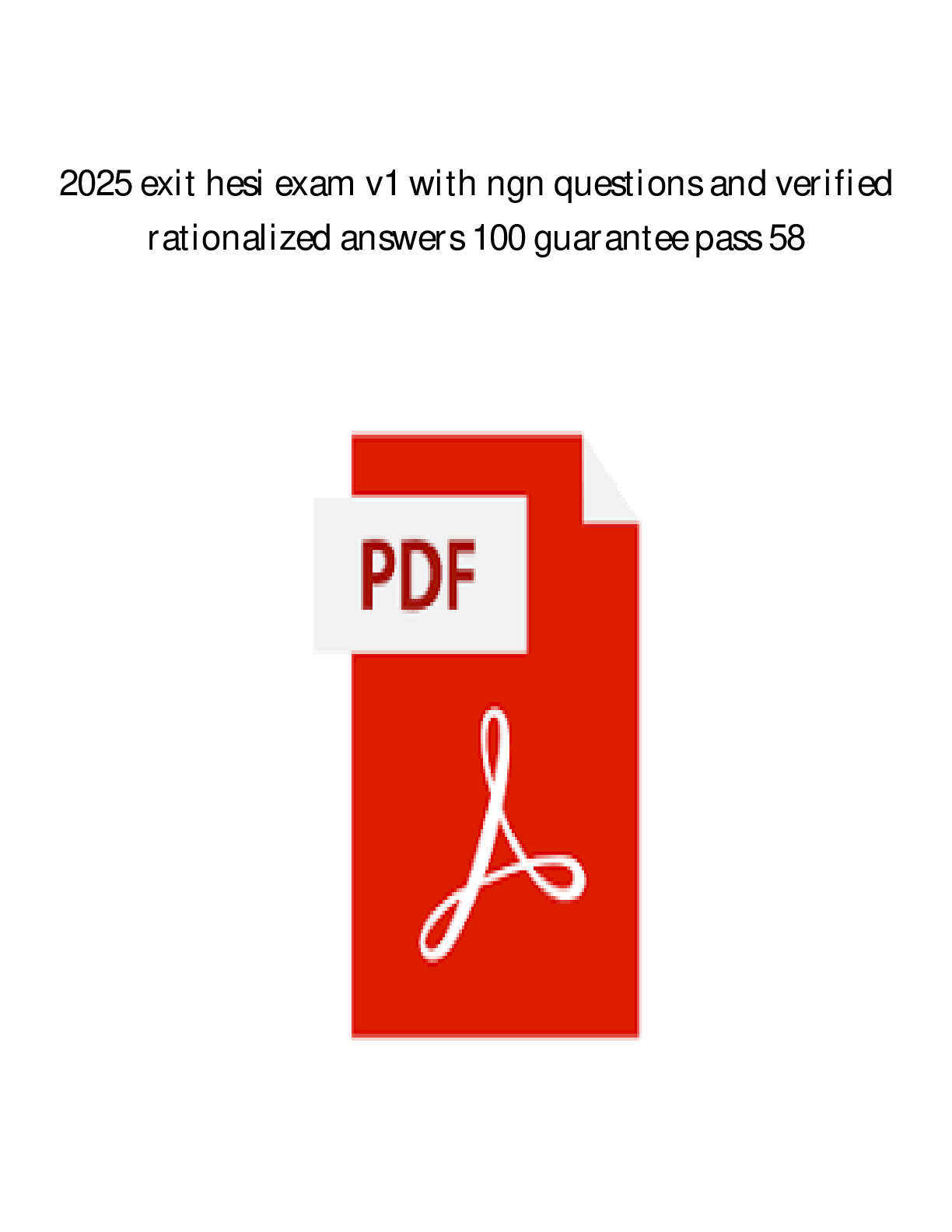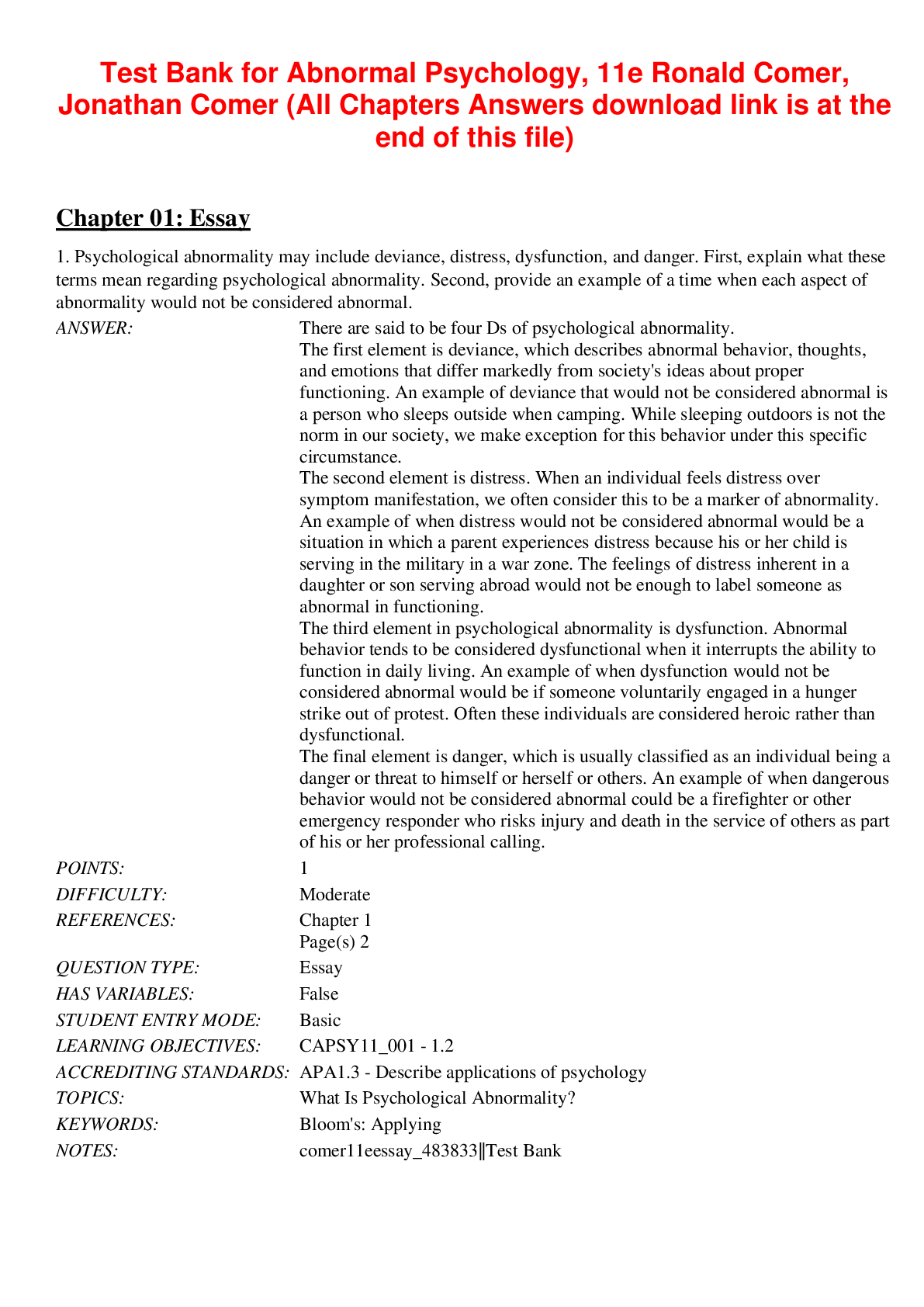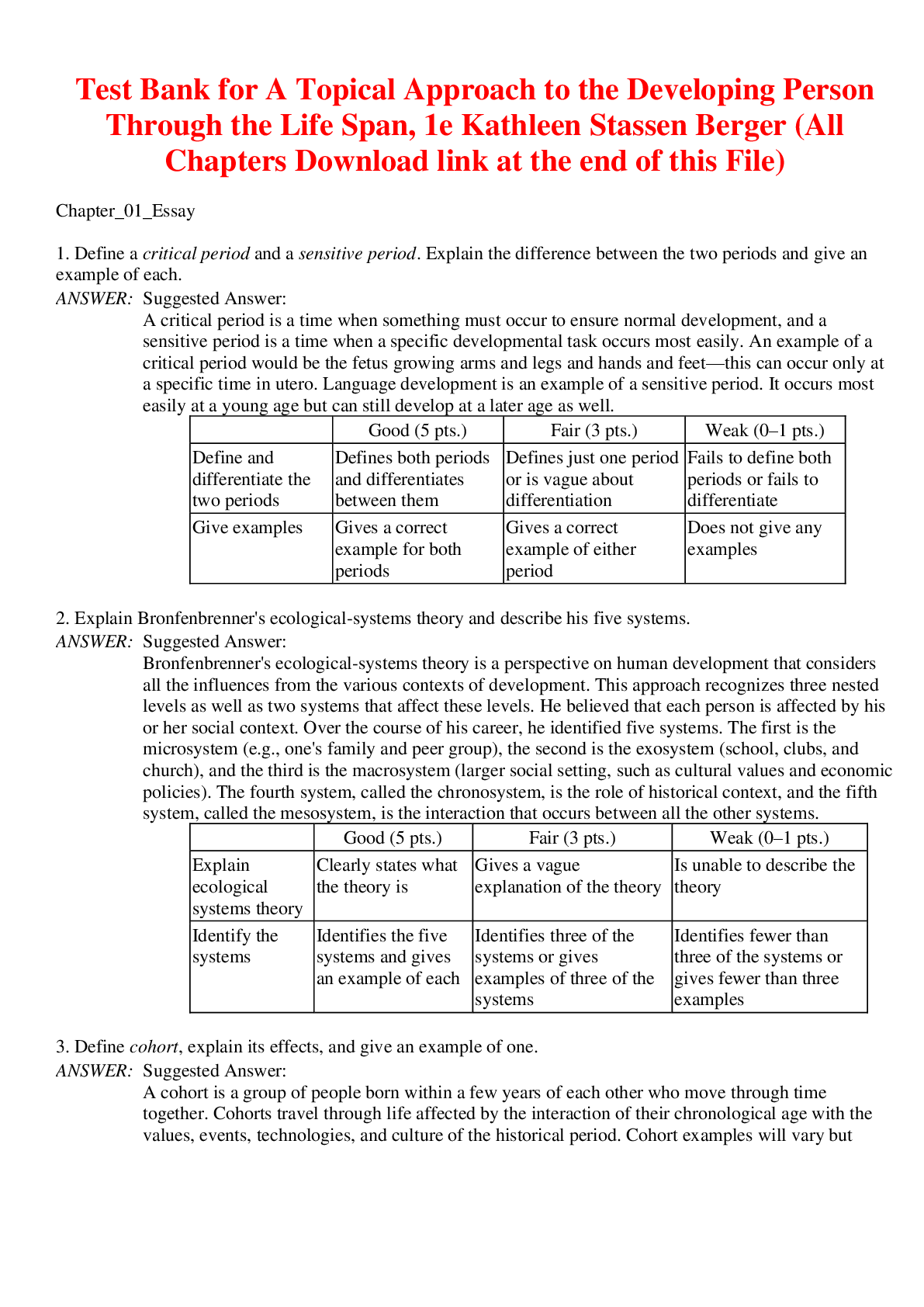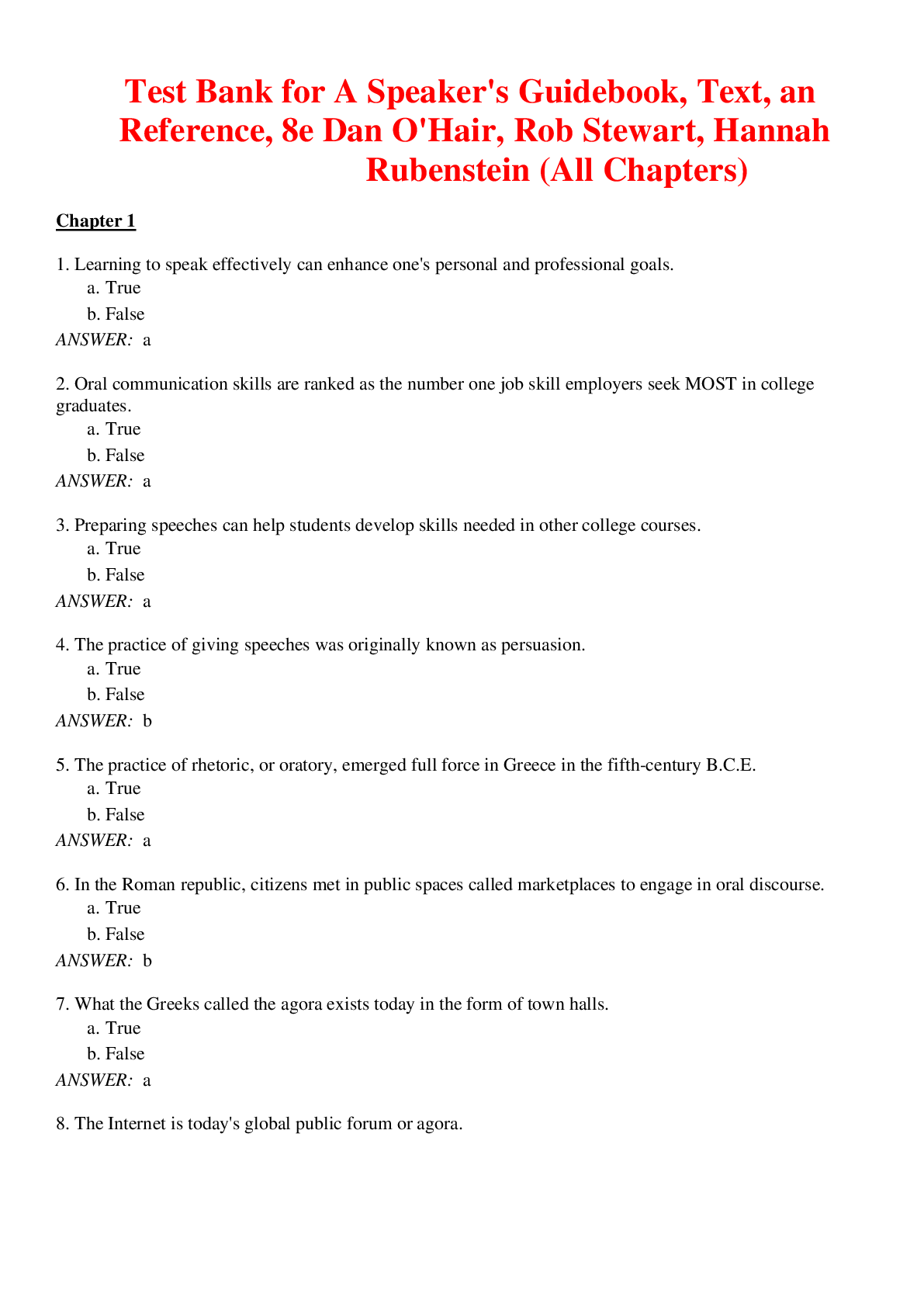Accounting > TEST BANKS > Solution Manual for College Accounting A Practical Approach 14th Canadian Edition Jeffrey Slater (All)
Solution Manual for College Accounting A Practical Approach 14th Canadian Edition Jeffrey Slater
Document Content and Description Below
Accounting Concepts and Procedures: An Introduction ANSWERS TO DISCUSSION QUESTIONS AND CRITICAL THINKING/ETHICAL CASE 1. The functions of accounting are to analyze, record, classify, summarize, r ... eport and interpret information. 2. Sole proprietorship—one owner, unlimited liability; easy to form Partnership—two or more owners; unlimited liability, easy to form Corporation—one or more shareholders; limited liability; more difficult to form. 3. Service, merchandising, or manufacturing. 4. The objective of accounting is to provide relevant, timely information for user decision making. Accountants must behave in an ethical manner so that the information they provide will be trustworthy and, therefore, useful for all decisions. Ethics are moral principles that guide the conduct of individuals. Sometimes business managers and accountants behave in an unethical manner. 5. The three elements of the basic accounting equation are assets, liabilities, owner’s equity. 6. Capital is the owner’s current investment or equity in the assets of a business. It is one subdivision of owner’s equity. 7. True. The sum of the left side of the equation must equal the sum of the right side of the equation. 8. False. It is the income statement that tells how well the company has performed. 9. False. Revenue is a subdivision of owner’s equity. 10. Owner’s equity is subdivided into Capital, Withdrawals, Revenue, and Expenses. 11. False. It is a subdivision of owner’s equity. 12. Reject. As expenses increase and revenue remains the same, owner’s equity decreases. 13. Revenue less Expenses; an income statement shows performance—profit or loss for the period. 14. False. It calculates ending capital. 15. The question in this case is whether Paul should be allowed to “pad” his expense account with an additional $100 of expenses. Paul should be allowed to charge only those items that are business related. Paul’s argument that he is entitled to an additional $100 is not a valid assumption. However, he should be allocated money for any business expenses during the weekend. Paul should also ask his employer for additional compensation for working during his non scheduled time. The important point is that accountants need to be seen as being ethical and should not do unethical activities. 1-2 © 2021 Pearson Canada All Rights Reserved SOLUTIONS TO CLASSROOM DEMONSTRATION EXERCISES CDE1. a. A CDE4. $24,000 ($12,000 + $12,000) CDE8. a. IS b. A b. BS c. L CDE5. c. J. Penny, Capital c. BS d. A d. Advertising Expense d. BS e. OE f. Taxi Fees Earned e. IS f. A g. J. Penny, Withdrawls f. IS g. OE h. BS CDE2. a. Liabilities and or Equities CDE6. c. Accounts Payable b. Assets d. Grooming Fees Earned CDE9 a. OE c. Accounts Payable b. BS c. BS d. IS CDE3. a. I CDE7. a. b. S b. d. CDE10. 1. Balance Sheet 2. Assets 3. Liabilities 4. Accounting Equation 5. Accounts Payable 6. Service 7. Owner’s Equity 8. Accounts Receivable 9. Transaction 10. Creditor SOLUTIONS TO EXERCISES—SET A E1-1A. a. $15,000 ($19,000 − $4,000) b. $15,000 ($ 6,000 + $9,000) c. $ 6,000 ($10,000 − $4,000) E1-2A. 1. Service 6. Service 2. Merchandise 7. Service 3. Service 8. Manufacturer 4. Merchandise 9. Manufacturer 5. Merchandise 10. Merchandis [Show More]
Last updated: 1 year ago
Preview 1 out of 657 pages

Buy this document to get the full access instantly
Instant Download Access after purchase
Buy NowInstant download
We Accept:

Reviews( 0 )
$26.50
Can't find what you want? Try our AI powered Search
Document information
Connected school, study & course
About the document
Uploaded On
Dec 05, 2024
Number of pages
657
Written in
All
Additional information
This document has been written for:
Uploaded
Dec 05, 2024
Downloads
0
Views
32

